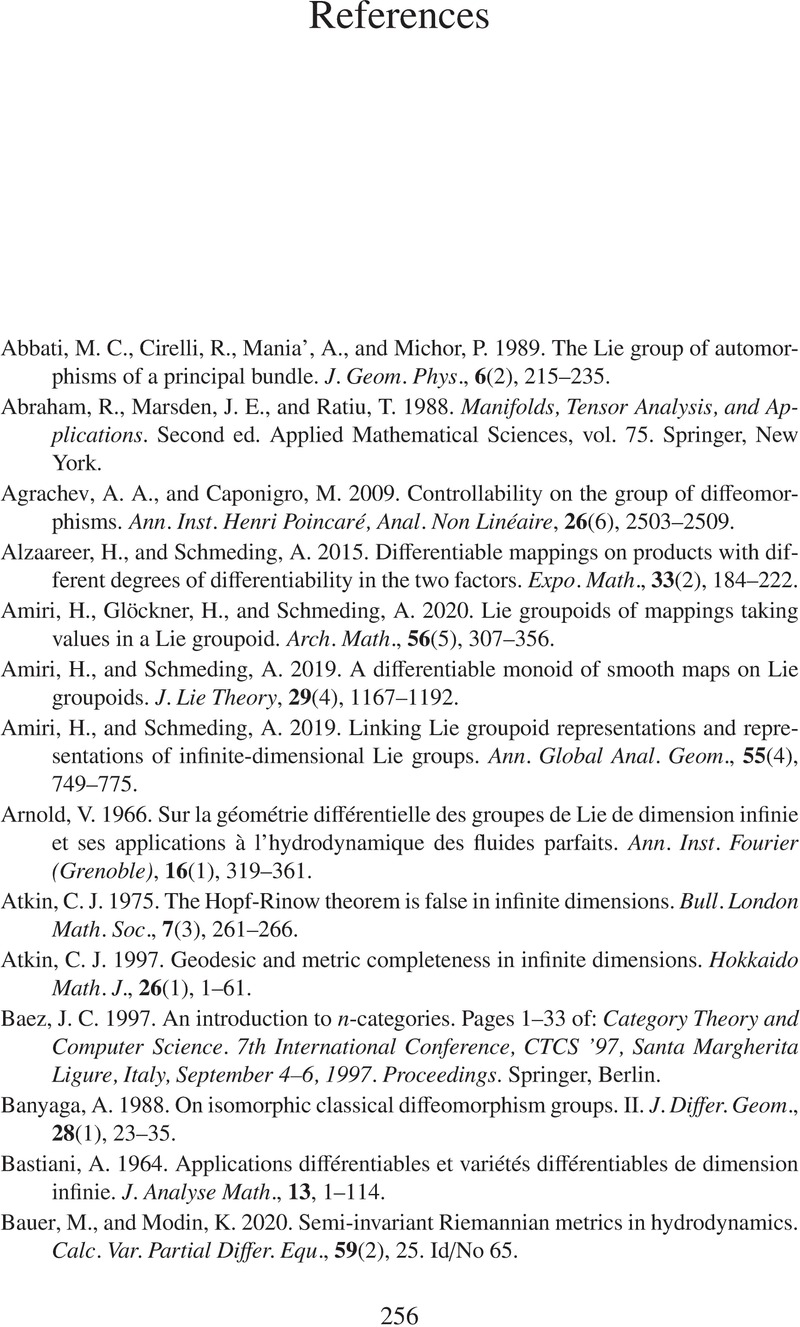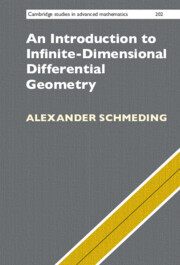Book contents
- Frontmatter
- Contents
- Preface
- 1 Calculus in Locally Convex Spaces
- 2 Spaces and Manifolds of Smooth Maps
- 3 Lifting Geometry to Mapping Spaces I: Lie Groups
- 4 Lifting Geometry to Mapping Spaces II: (Weak) Riemannian Metrics
- 5 Weak Riemannian Metrics with Applications in Shape Analysis
- 6 Connecting Finite-Dimensional, Infinite-Dimensional and Higher Geometry
- 7 Euler–Arnold Theory: PDEs via Geometry
- 8 The Geometry of Rough Paths
- Appendix A A Primer on Topological Vector Spaces and Locally Convex Spaces
- Appendix B Basic Ideas from Topology
- Appendix C Canonical Manifold of Mappings
- Appendix D Vector Fields and Their Lie Bracket
- Appendix E Differential Forms on Infinite-Dimensional Manifolds
- Appendix F Solutions to Selected Exercises
- References
- Index
- References
References
Published online by Cambridge University Press: 08 December 2022
- Frontmatter
- Contents
- Preface
- 1 Calculus in Locally Convex Spaces
- 2 Spaces and Manifolds of Smooth Maps
- 3 Lifting Geometry to Mapping Spaces I: Lie Groups
- 4 Lifting Geometry to Mapping Spaces II: (Weak) Riemannian Metrics
- 5 Weak Riemannian Metrics with Applications in Shape Analysis
- 6 Connecting Finite-Dimensional, Infinite-Dimensional and Higher Geometry
- 7 Euler–Arnold Theory: PDEs via Geometry
- 8 The Geometry of Rough Paths
- Appendix A A Primer on Topological Vector Spaces and Locally Convex Spaces
- Appendix B Basic Ideas from Topology
- Appendix C Canonical Manifold of Mappings
- Appendix D Vector Fields and Their Lie Bracket
- Appendix E Differential Forms on Infinite-Dimensional Manifolds
- Appendix F Solutions to Selected Exercises
- References
- Index
- References
Summary

Information
- Type
- Chapter
- Information
- An Introduction to Infinite-Dimensional Differential Geometry , pp. 256 - 263Publisher: Cambridge University PressPrint publication year: 2022
- Creative Commons
- This content is Open Access and distributed under the terms of the Creative Commons Attribution licence CC-BY-NC-ND 4.0 https://creativecommons.org/cclicenses/
